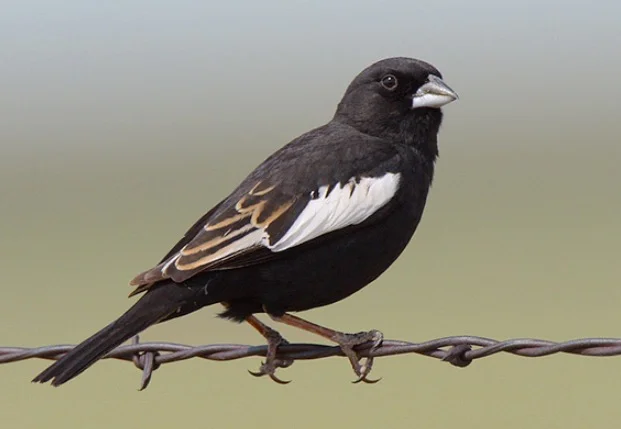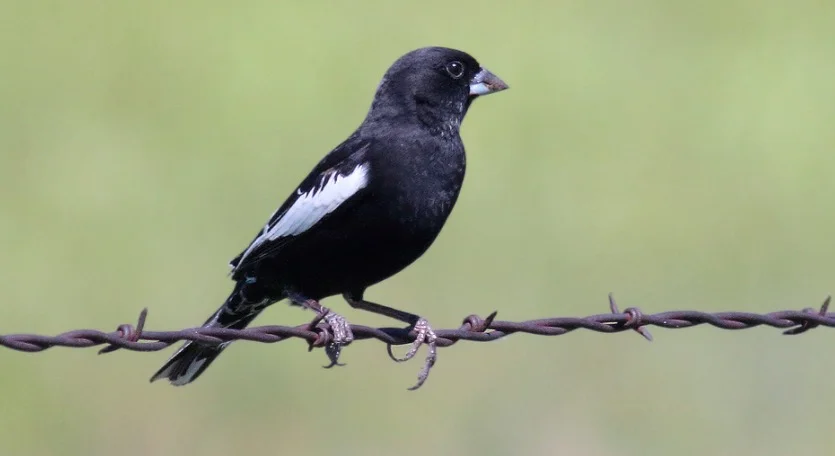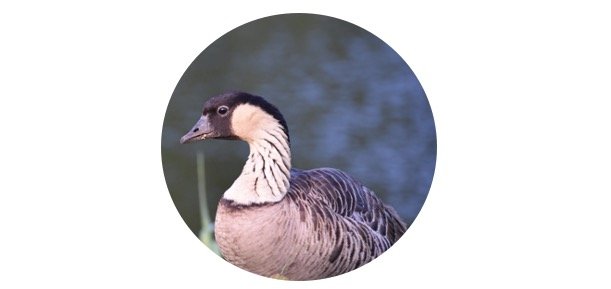Colorado State Bird: Description, Pictures, & Fun Facts

Table of Contents
What is Colorado State Bird?
Colorado is the eighth-largest state by area and the twenty-first most populated state in the United States. It is widely recognized for its magnificent scenery, which are accompanied by a wealth of animals. Colorado’s state mammal is the Rocky mountain bighorn sheep, but what is the official state bird?
In 1931, Colorado designated the lark bunting (Calamospiza melanocorys) as its state bird. This medium-sized songbird, a member of the sparrow family, has a predominantly black coat of feathers with a white patch on its wings and lives in the state’s scrub and grassland habitats. This omnivore eats largely bugs, but also weed and grass seeds in the winter.
Why is Lark Bunting Colorado State Bird?
The Centennial Colorado State picked the wild lark bunting as its state bird, despite the fact that the bird is neither a lark nor a bunting. It is, in fact, a sparrow. Because of its melodious voice and acrobatic courting dance, the local bird endeared itself to the citizens of the state.
Residents are intrigued by the male bird’s brilliant dance as he tries to capture the heart of a stunning female sparrow. The man throws himself 50 feet into the air and spirals in a spiral downward while singing a love song to his possible spouse.

When did Lark Bunting become Colorado State Bird?
The Colorado state had a legislative discussion in 1931 over which bird to designate as its official bird. Most states simply have a student referendum, like Colorado did. It simply refused to accept the choice, instead hosting a competition for the top three finalists — the meadowlark, mountain bluebird, and lark bunting.
Colorado was aware that many states share their state bird with other states, and it wanted to stand apart. Although the birds can only be found in the state’s Eastern Plains, and the state desired a bird that could be found across the state, this small sparrow had a fighting chance.
Each organization that backed a particular bird made a presentation to the Colorado legislature. Before departing the capital, bluebird representative naturalist Charles Bowman Hutchins gave a short statement and whistled a few bars of birdsong. Katherine L. Craig, the state superintendent of education, represented the meadowlark.
Students shared her favourite bird, despite the fact that she hadn’t even supplied a vote option for the lark bunting. Roy Langdon, head of the Colorado Audubon Society and a Fort Collins high school teacher, brought 121 of his senior class as a pep rally for the now-state bird.
He described the lark bunting as a “troubadour of the Plains,” regaling the bird as “gentle in demeanour” and “pleasingly convivial among his comrades” in a 15-minute oratory. When the lawmakers voted, the long-shot sparrow came out on top.
What does Colorado State Bird look like?
This sparrow is dressed elegantly in black feathers, with a white emphasis on its wings. The magnificent male lark bunting, preparing for breeding, looks to be wooing in a tuxedo. Females and nonbreeding males are dressed with gray-brown feathers with stripes.
The tiny beak of these birds give a bright contrast to their black bodies. Both sexes reach a length of five to seven inches and a wingspan of 11 inches. Despite their large wingspan, they have short tails with white feather tips. This little bird typically weighs 1.3 to 1.5 ounces.
How do Colorado State Bird behave?
These social avians, as Langdon defined them, have a benign demeanour. They appreciate sagebrush and prefer to live in meadows and plains. They build their nests on the ground and conceal them behind plants.
In grassy regions, the lark bunting will also make its home. The shape of their house varies from that of other bird nests in that it takes the form of a deep-sided cup. During the winter, the lark bunting migrates.
It calls Colorado home, but like many human snow birds, the state becomes a little chilly for the feathered fowls. It snows in Arizona, Texas, and northern Mexico during the winter. Lark buntings have two unique songs and a variety of communication noises.
In the spring and summer, the males employ the two songs to attract mates. They sing both a slow, unique tune and a trill. These brief tunes run around eight seconds.
Their bird cries include an in-flight call, a call to notify their spouse and young birds when they return to the nest, and a hungry bird cry.
Do Lark Bunting form communities?
Lark buntings travel in large groups. They go in groups from Colorado to Texas or Arizona. In their wintering habitat, they prefer grasslands for breeding but may utilize a dry lake bed if necessary. The grassland is where the lark bunting like to reside and eat.
Sometimes the cold forces them to live as nomads. When necessary, they will graze in a human-populated and modified region, and you may find them chewing on weed seed in cow feedlots or along the Texas roadside.
What do Lark Bunting eat?
Lark buntings are officially omnivores, however they would prefer to eat bugs than weed seeds. During the summer, when insects are plentiful, the bird prefers to manufacture flesh for two-thirds of its diet.
Lark buntings feed their young an entirely meat-based diet. They graze by stripping grasses of their seed or tapping the ground to find seeds. They stalk and pursue their prey while hunting insects. Females and males will pursue them in flight, although females do it more often.
Females are also faster on the ground than men while foraging. Ants, bees, beetles, caterpillars, flies, grasshoppers, leafhoppers, moths, and wasps are among their favourite meats. Cactus fruit, grains, forbs, grass, and leaves are among their favourite vegetable meals.









